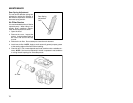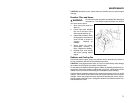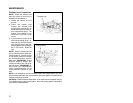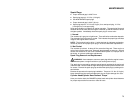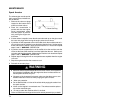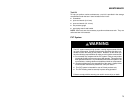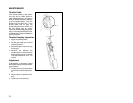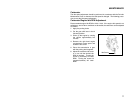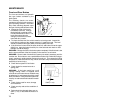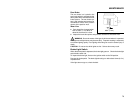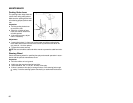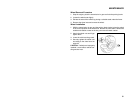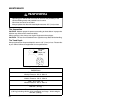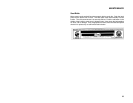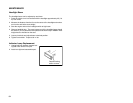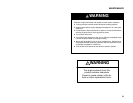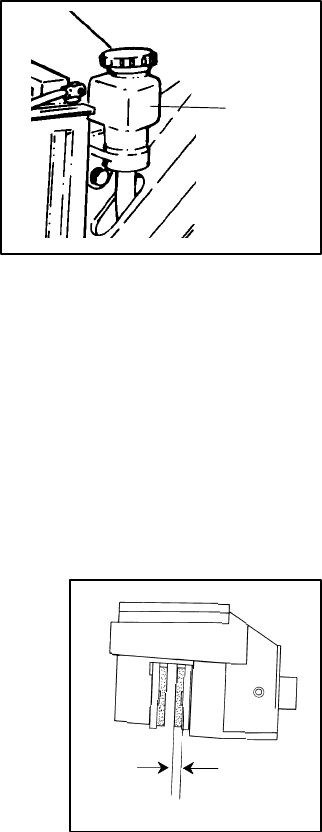
78
MAINTENANCE
Front and Rear Brakes
The front and brakes are hydraulic
disc type brakes activated by the
brake pedal.
The following checks are recom-
mended to keep the brake system in
good operating condition. How often
they need checking depends upon
the type of driving that has been done.
D Inspect the level of the brake
fluid before each ride. Change
the brake fluid according to the
Periodic Maintenance Chart. The
brake fluid should also be
changed if it becomes contami-
nated with dirt or water.
D To check the fluid level, the vehicle must be on level ground. Inspect the
brake fluid by looking at the remote reservoir (1) under the hood. The level
should be between the upper (MAX) and lower (MIN) level lines.
D If the fluid level is lower than the lower level line, add brake fluid to the upper
(MAX) line. Apply the brake forcefully for a few seconds and check for fluid
leakage around the fittings.
WARNING: Change the fluid in the brake system completely if the fluid level is low
but the type and brand of the fluid already in the reservoir are unknown.
WARNING: Once a bottle of brake fluid is opened, use what is necessary and dis-
card the rest. Do not store or use a partial bottle of brake fluid. Brake fluid is hygro-
scopic, meaning it rapidly absorbs moisture from the air. This causes the boiling
temperature of the brake fluid to drop, which can lead to early brake fade and the
possibility of serious injury.
D Check brake system for fluid leaks.
D Check brake for excessive travel or
spongy feel.
WARNING: If the brake pedal has a soft
“spongy” feeling” when it is applied, there
could be air in the brake lines or the brake may
be defective. Do not operate the vehicle under
these conditions. Have the brake system ser-
viced by an authorized Polaris dealer immedi-
ately.
D Check friction pads for wear, damage
and looseness.
D Check security and surface condition of
the disc.
D Pads should be changed when worn to
3/64″ (.1 cm), or about the thickness of a
dime.
1
3/64″ (.1 cm)



